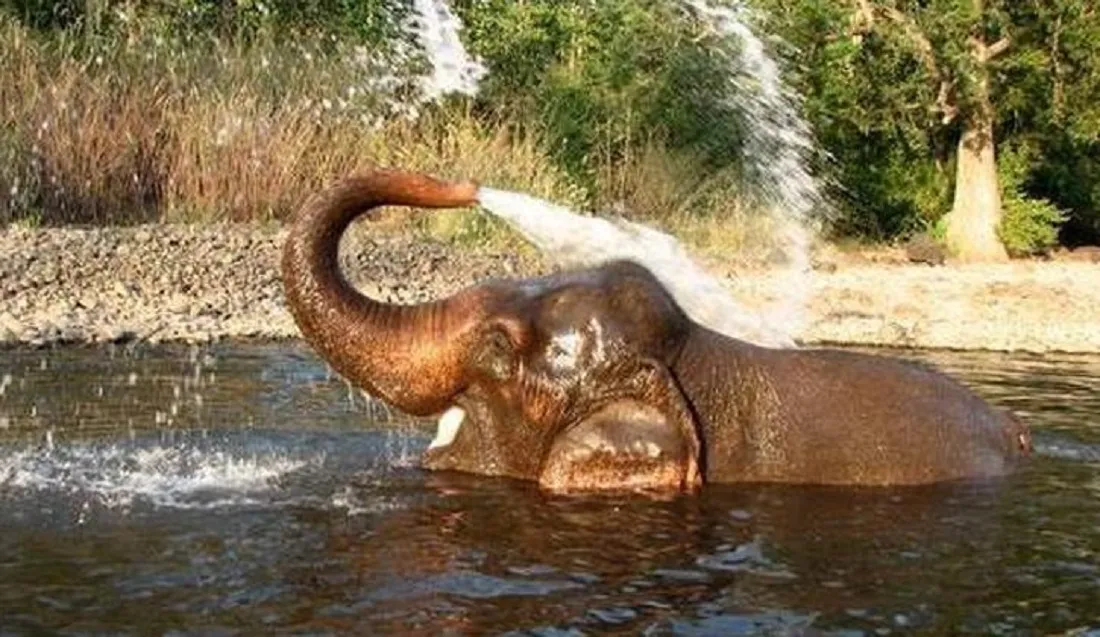National Parks in Maharashtra: Discover the Natural Treasures of Western India

Table of Contents
ToggleMaharashtra National Parks List -
Welcome to Maharashtra, a state in western India known for its rich cultural heritage, bustling cities, and diverse landscapes. Amidst the hustle and bustle of urban life, Maharashtra is also home to several stunning national parks that offer a respite into the lap of nature. From dense forests to rolling hills, Maharashtra’s national parks boast breathtaking landscapes, thriving wildlife, and unique experiences.
Join me as we embark on a journey to explore the mesmerizing national parks of Maharashtra, discovering their natural wonders, diverse ecosystems, and the incredible wildlife that calls them home. Whether you’re a nature enthusiast, wildlife lover, or adventure seeker, Maharashtra’s national parks have something to offer for everyone. Get ready to immerse yourself in the beauty and tranquility of these protected areas as we delve into the magnificent national parks of Maharashtra.
National Parks of Maharashtra -
Here is the list of national parks in Maharashtra:
1- Tadoba Andhari Tiger Reserve-
Tadoba Andhari Tiger Reserve is one of Maharashtra’s most renowned and popular national parks. Located in the Chandrapur district, it spans over 1,700 square kilometers and is Maharashtra’s largest national park. Here’s what makes Tadoba Andhari Tiger Reserve a remarkable destination:
- Rich Wildlife: Tadoba Andhari Tiger Reserve is famous for its thriving tiger population. It is home to approximately 88 tigers, making it an excellent place for tiger sightings. Apart from tigers, the reserve boasts a diverse range of wildlife, including leopards, Indian gaur (Indian bison), sloth bears, sambar deer, spotted deer, wild dogs, and various species of birds.
- Varied Habitats: The reserve encompasses landscapes, including rugged hills, dense forests, open grasslands, and serene water bodies. These diverse habitats support a wide range of flora and fauna, creating a unique and vibrant ecosystem.
- Scenic Landscapes: Tadoba Andhari Tiger Reserve offers breathtaking natural beauty. The picturesque landscapes, with the backdrop of hills and meandering rivers, create a tranquil and captivating environment for visitors.
- Birdwatching Paradise: The reserve is a haven for bird enthusiasts. It is home to over 195 species, including endangered and migratory birds. Birdwatchers can spot species like the Indian pitta, crested serpent eagle, Indian roller, and the critically endangered Oriental white-backed vulture.
- Safari Experience: Tadoba Andhari Tiger Reserve visitors can embark on thrilling jungle safaris to explore the park’s wildlife. Jeep safaris are the primary mode of exploration, offering opportunities to spot tigers, other animals, and immerse oneself in the reserve’s beauty.
- Conservation Efforts: Tadoba Andhari Tiger Reserve is actively involved in conservation initiatives to protect its wildlife and habitats. The reserve plays a vital role in the preservation of the endangered Royal Bengal tiger and other species in the region.
Visiting Tadoba Andhari Tiger Reserve provides a chance to witness the majestic big cats, explore diverse ecosystems, and appreciate the natural wonders of Maharashtra.
2- Sanjay Gandhi National Park
Sanjay Gandhi National Park, located in Mumbai, Maharashtra, is a unique and significant national park known for its rich biodiversity and proximity to a bustling urban center. Here’s what makes Sanjay Gandhi National Park a remarkable destination:
- Urban Wilderness: Sanjay Gandhi National Park is one of the few national parks in the world within a metropolitan city. It offers a green oasis amidst the concrete jungle of Mumbai, providing a respite from the city’s hustle and bustle.
- Lush Forests and Hills: The park spans over 104 square kilometers and encompasses dense forests, rolling hills, and a picturesque lake. The lush greenery creates a serene environment for nature lovers and outdoor enthusiasts.
- Wildlife Haven: Despite being in an urban setting, the national park is home to a remarkable variety of wildlife. The park is inhabited by leopards, spotted deer, sambar deer, macaques, langurs, and various bird species. It offers opportunities for wildlife sightings and birdwatching.
- Kanheri Caves: Located within the national park, the ancient Kanheri Caves is an archaeological site dating back to the 1st century BC. These caves, carved out of basalt rock, served as Buddhist monastic complexes and showcased intricate sculptures, inscriptions, and meditation cells.
- Trekking and Nature Trails: Sanjay Gandhi National Park offers several trekking and nature trails, allowing visitors to explore the park’s beauty on foot. The trails lead to viewpoints, waterfalls, and vantage points, offering stunning vistas of the surrounding landscape.
- Lion and Tiger Safari: The national park also houses a lion and tiger safari area, where visitors can take guided safaris to observe these majestic big cats in a controlled environment.
- Environmental Education and Awareness: Sanjay Gandhi National Park is dedicated to environmental education and awareness. It hosts nature camps, guided walks, and workshops for students and visitors to promote conservation and a deeper understanding of the natural world.
3- Pench National Park
Pench National Park, located on the border of Maharashtra and Madhya Pradesh, is a beautiful national park that spans an area of approximately 758 square kilometers. It is renowned for its scenic beauty, rich biodiversity, and the inspiration it provided for Rudyard Kipling’s classic novel, “The Jungle Book.” Here’s what makes Pench National Park a must-visit destination:
- Natural Splendor: Pench National Park offers a picturesque landscape characterized by dense forests, rolling hills, meandering rivers, and lush valleys. The park’s serene and pristine environment is a treat for nature enthusiasts and photographers.
- Wildlife Diversity: The national park is home to various flora and fauna. It is particularly famous for its thriving population of tigers, making it a prime destination for tiger sightings. Pench National Park is also home to leopards, Indian bison (gaur), sloth bears, wild dogs (dholes), sambar deer, spotted deer, langurs, and an impressive array of bird species.
- Mowgli’s Realm: The dense forests of Pench National Park are said to have inspired Rudyard Kipling’s “The Jungle Book.” Exploring this park allows visitors to immerse themselves in the world of Mowgli and experience the enchantment of the jungles that captivated readers worldwide.
- Jungle Safaris: Visitors to Pench National Park can embark on thrilling jungle safaris to witness its wildlife up close. Jeep and canter safaris are popular options for exploring the park and maximizing the chances of spotting tigers and other animals. These safaris are usually led by experienced guides who provide insights into the park’s ecology and wildlife behavior.
- Birdwatching Paradise: Pench National Park is a haven for bird enthusiasts, with over 285 recorded species of resident and migratory birds. The park’s diverse habitats, including forests, grasslands, and water bodies, attract various avian species. Birdwatchers can spot birds such as the Indian roller, Malabar pied hornbill, crested serpent eagle, and several species of owls, herons, and kingfishers.
- Nature Trails and Interpretation Centers: Pench National Park offers nature trails that allow visitors to explore the park on foot, accompanied by trained naturalists. These trails offer an opportunity to delve deeper into the park’s natural wonders and learn about its flora, fauna, and ecological significance. The park also houses interpretation centers where visitors can gain insights into the region’s biodiversity and conservation efforts.
4- Bhimashankar Wildlife Sanctuary
Bhimashankar Wildlife Sanctuary, located in the Western Ghats of Maharashtra, is a haven for nature enthusiasts and wildlife lovers. This sanctuary is over approximately 130 square kilometers known for its diverse ecosystems, pristine forests, and unique wildlife. Here’s what makes Bhimashankar Wildlife Sanctuary a remarkable destination:
- Lush Greenery: The sanctuary is characterized by lush green forests that are part of the Western Ghats, a UNESCO World Heritage Site. The dense vegetation consists of evergreen forests, bamboo groves, and patches of grasslands, creating a stunning backdrop for wildlife exploration.
- Endemic Species: Bhimashankar Wildlife Sanctuary is home to several endemic and rare species. One of the sanctuary’s highlights is the presence of the critically endangered Malabar giant squirrel, known for its vibrant coat and striking appearance. Other species found here include the Indian giant flying squirrel, Indian leopard, barking deer, sambar deer, and langurs.
- Avian Paradise: The sanctuary is a paradise for birdwatchers, with over 210 species of birds recorded. Bird enthusiasts can spot species like the Malabar grey hornbill, Malabar whistling thrush, Indian pitta, yellow-throated bulbul, and the globally threatened forest owlet. The sanctuary’s diverse habitats attract avian species, including forests, streams, and waterfalls.
- Bhimashankar Temple: The sanctuary is also famous for the ancient Bhimashankar Temple, dedicated to Lord Shiva. This temple attracts pilgrims and tourists alike to seek blessings and witness the unique blend of spirituality and natural beauty surrounding the sanctuary.
- Trekking and Nature Trails: Bhimashankar Wildlife Sanctuary offers trekking and nature trails that allow visitors to explore the stunning landscapes and encounter its diverse flora and fauna. Trekking routes like the Ganesh Ghat and Shidi Ghat provide breathtaking views, waterfalls, and opportunities to spot wildlife.
- Conservation Efforts: The sanctuary is actively involved in conservation initiatives, including protecting endemic species and their habitats. Efforts are made to raise awareness about wildlife conservation among visitors and local communities.
Bhimashankar Wildlife Sanctuary offers a serene and enchanting experience in the lap of nature. It provides a unique opportunity to witness rare wildlife, explore pristine forests, and immerse oneself in the beauty of the Western Ghats. Whether you are a nature lover, a bird enthusiast, or a spiritual seeker, Bhimashankar Wildlife Sanctuary offers a memorable journey into the heart of biodiversity and tranquility.
5- Gugamal National Park
Gugamal National Park, located in the Amravati district of Maharashtra, is a part of the larger Melghat Tiger Reserve. Spanning over an area of around 361 square kilometers, this national park is known for its rugged terrain, dense forests, and rich biodiversity. Here’s what makes Gugamal National Park a notable destination:
- Rugged Landscape: Gugamal National Park is nestled amidst the Satpura Mountain Range, resulting in a rugged and picturesque landscape. The park is characterized by steep hills, deep valleys, rocky outcrops, and gorges, creating a dramatic and awe-inspiring setting.
- Wildlife Diversity: The national park is home to a wide variety of wildlife, including the majestic Royal Bengal tiger. Apart from tigers, the park houses other notable species, such as Indian leopard, Indian bison (gaur), sloth bear, wild dogs (dholes), sambar deer, spotted deer, langurs, and various reptiles and amphibians.
- Avian Delights: Gugamal National Park is a paradise for birdwatchers, with over 200 species of birds documented. The park’s diverse habitats, ranging from deciduous forests to grasslands and water bodies, attract avian species. Visitors can spot birds such as the Indian pitta, Indian roller, crested serpent eagle, hornbills, peafowls, and several migratory birds.
- Scenic Beauty: Its numerous streams, rivulets, and waterfalls enhance the park’s natural beauty. These water sources provide a refreshing and serene ambiance, especially during the monsoon season when the park comes alive with lush greenery and flowing cascades.
- Wildlife Conservation: Gugamal National Park, as part of the Melghat Tiger Reserve, actively participates in wildlife conservation efforts. The park plays a crucial role in protecting endangered species, promoting habitat preservation, and raising awareness about the importance of wildlife conservation among local communities and visitors.
- Trekking and Nature Trails: Gugamal National Park offers trekking and nature trails that allow visitors to explore the park’s natural wonders on foot. These trails provide an opportunity to immerse oneself in the tranquility of the surroundings, witness breathtaking vistas, and spot wildlife along the way.
Gugamal National Park offers nature enthusiasts and wildlife lovers a thrilling and immersive experience. It showcases the beauty of Maharashtra’s diverse landscapes and provides a chance to witness iconic wildlife in their natural habitats. Whether it’s tiger tracking, birdwatching, or exploring the rugged terrains, Gugamal National Park promises a memorable journey into the heart of the wilderness.
Conclusion -
In conclusion, Maharashtra has a remarkable collection of national parks and wildlife sanctuaries showcasing the state’s abundant natural beauty and biodiversity. These protected areas provide a haven for numerous plant and animal species, offering visitors a chance to immerse themselves in the wonders of nature.
From the iconic Tadoba Andhari Tiger Reserve to the sprawling Sanjay Gandhi National Park, each national park in Maharashtra has unique charm and offerings. Whether it’s the thrill of spotting a tiger, the serenity of exploring dense forests, or the joy of birdwatching, these parks cater to a wide range of interests and provide unforgettable experiences.
Maharashtra’s national parks offer recreational opportunities and play a crucial role in wildlife conservation. They serve as important habitats for endangered species and contribute to the overall ecological balance of the region. Additionally, these parks serve as educational platforms, raising awareness about the importance of wildlife conservation and promoting sustainable practices.


